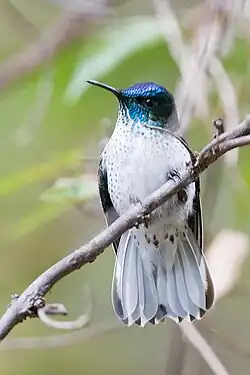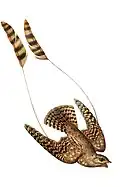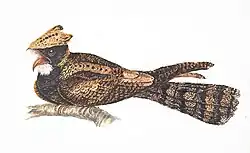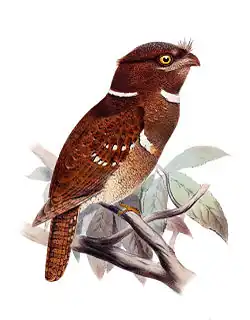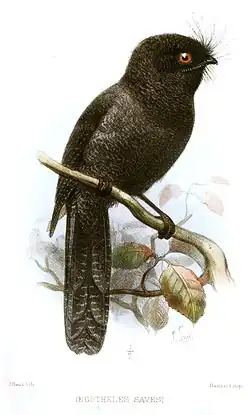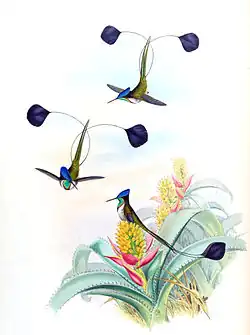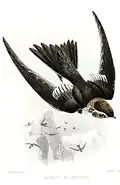Firecrown
| Firecrown | |
|---|---|
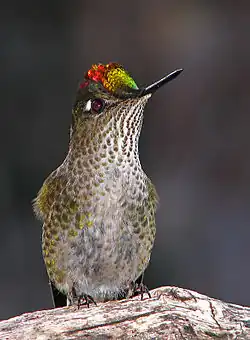
| |
| Green-backed firecrown (Sephanoides sephaniodes) | |
| Scientific classification | |
| Kingdom: | Animalia |
| Phylum: | Chordata |
| Class: | Aves |
| Clade: | Strisores |
| Order: | Apodiformes |
| Family: | Trochilidae |
| Tribe: | Lesbiini |
| Genus: | G.R. Gray, 1840 |
| Type species | |
| Mellisuga kingii[1] Vigors, 1827
| |
| Species | |
|
S. sephaniodes | |
The firecrowns are the genus Sephanoides of the hummingbirds.
Species
There are two species.[2]
| Common name | Scientific name and subspecies | Range | Size and ecology | IUCN status and estimated population |
|---|---|---|---|---|
| Green-backed firecrown
|
Sephanoides sephaniodes (Lesson & Garnot, 1827) |
Argentina and Chile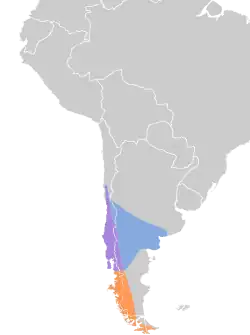
|
Size: Habitat: Diet: |
LC
|
| Juan Fernández firecrown
|
Sephanoides fernandensis (King, 1831) Two subspecies
|
Isla Róbinson Crusoe, Chile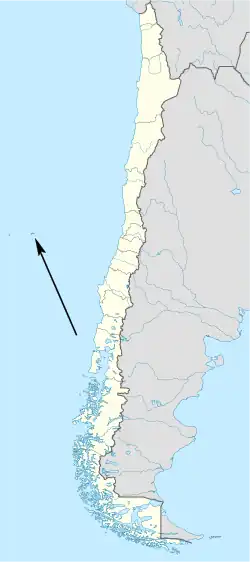
|
Size: Habitat: Diet: |
CR
|
The green-backed firecrown occurs widely in Argentina and Chile, but the Juan Fernández firecrown is found solely on Isla Róbinson Crusoe, one of a three-island archipelago belonging to Chile.
Both species will hang from flower petals or leaves with their feet. They feed on nectar and insects
References
- ^ "Trochilidae". aviansystematics.org. The Trust for Avian Systematics. Retrieved 2023-08-05.
- ^ Gill, Frank; Donsker, David; Rasmussen, Pamela, eds. (July 2020). "Hummingbirds". IOC World Bird List Version 10.2. International Ornithologists' Union. Retrieved 2 January 2020.
